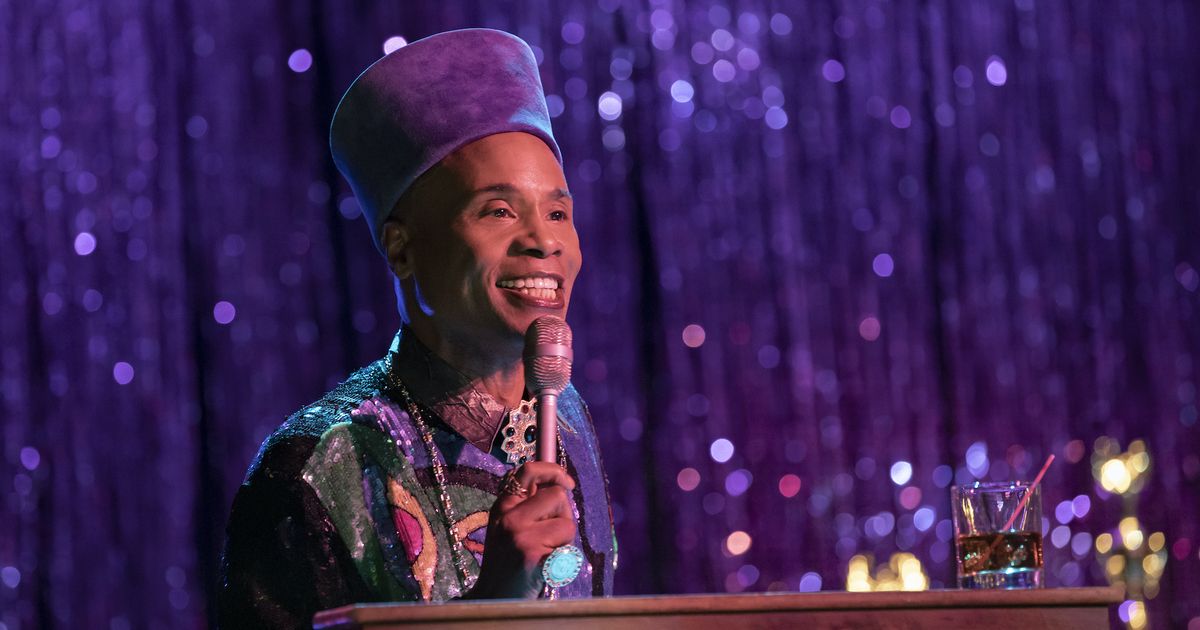
All good things must come to and end and Pose was a very good thing. This groundbreaking show, which gave trans women of color their literal first shot at telling stories about themselves on TV, has made the entertainment landscape a better and more inclusive place by existing both as itself and as an example of how giving opportunities to marginalized communities produces great art. It brought a new generation of queer and trans actors to the forefront of television and gave them space to shine brightly while paying homage to the LGBTQ icons of the past and present. Pose Season 3 is the final chapter in the story of the House of Evangelista, and while the season as a whole is not perfect, the show pulls off an absolutely perfect ending.
It’s fortunate that FX released the first two episodes of Pose Season 3 together because they are some of the clumsiest the series has produced so far. Episode 1 in particular smacks of rewiring Season 2’s dangling plotlines to better conduct for the show’s finale. For example, Season 2 ended with a time jump to the year 1991, in which Blanca’s health was deteriorating, her children had mostly moved on from her house, and she extended her hand to two street children to renew the House of Evangelista. Season 3 begins with another time jump to 1993, when Blanca’s health is holding, Friday night dinners with her original children are more common, and those two kids are nowhere to be found.
There’s also the issue of lead character Damon (Ryan Jamal Swain), who appears in the first episode of Season 3 and vanishes from Pose entirely in the second. The episode 2 scene in which Blanca explains why he’s gone and won’t be coming back is conspicuously filmed outside with most of the actors seated several feet apart, hinting that Swain’s absence from the show is related to the almost yearlong break in filming caused by the coronavirus pandemic. Still, dropping Damon as a character and never bringing him up again, even in scenes where commenting on a missing member of the House of Evangelista makes more sense than not, is just another awkward hump the first two episodes need to get over before Season 3 takes off in all of its stunning glory.
Everything that is good about Pose is in full bloom for its final five episodes. The ballroom scenes sparkle with exquisite costumes and music, the slightly overengineered but meaningful dialogue is as heartwrenching as ever, and this show’s unfailing dedication to creating a fantasy for characters who don’t usually get happy endings is forever a bright spot of hope in the TV landscape. The plot shuffling in the beginning of the season exists to serve this goodness and results in Pose having more time to spend on maneuvering its characters through their final arcs.
The ballroom is a place of legacy, family, and memory, and Season 3 features the show’s most beautiful examples of using the floor as a medium to express unconditional love.
In the past, we’ve lauded Pose for making everyone cry while focusing on joy, but this show has never shied away from portraying the reality of being a gay or trans person of color especially in the 1980s and 1990s. Season 3 ethically tackles the long term impacts of the HIV/AIDS crisis, drug abuse, racism, and violence on the House of Evangelista and never lets any viewer forget that each character’s happiness is a hard won treasure. Some of their roadblocks are more difficult than others (Season 3 Elektra is too mighty to be toppled for long), but the characters’ pain in overcoming them is always portrayed as only part of their journey.
Pose‘s central thesis that ballroom is a place where families form, communities thrive, and dreams come true has always been rather literal where the main characters are concerned, but picking an emotional hardline and sticking to it is one of the show’s greatest strengths. The love Blanca, Pray Tell, Angel, Papi, Ricky, and even Elektra hold for each other, a love forged on the ballroom floor, is the framework upon which every other element of Pose hangs. That’s why on Pose when the worst does happen, as it does in any show starring characters whose humanity is not valued by the government or medical establishment, there’s never a sense of absolute loss. The ballroom is a place of legacy, family, and memory, and Season 3 features the show’s most beautiful examples of using the floor as a medium to express unconditional love.
Pose Season 3 accomplishes what many final seasons of a show often fail at: completing a story to an entirely satisfying end. In only seven episodes, the show brings each character (except for Damon) to the natural conclusion of their story in arcs crafted for maximum catharsis — so much so that it actually feels good to say goodbye when the time comes. Saying farewell to Pose feels like parting with a loved one who you know will be OK no matter what comes next. They’re all right, you’re all right, and remembering you loved them at all makes life more meaningful.
Pose Season 3 premieres on FX on May 2.
